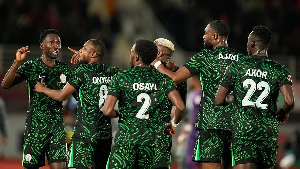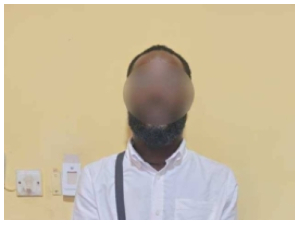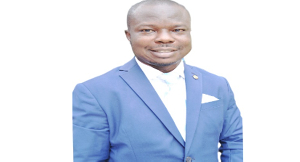There are over a hundred tribes in Ghana but the major ones are the Ashanti, Ewe, Fanti, Ga-Adangme, Mole-Dagbaani and Guan. Each has a history, a unique one about their migration, how they came into modern-day Ghana and their origins.
Ghanaweb, as part of its Ghana Month series today puts the spotlight on the 6 major ethnic groups and their migration stories.
Ashanti
The Ashanti tribe or Asante’s are one of Ghana’s major ethnic groups. The ancient Ashanti migrated from the vicinity of the northwestern Niger River after the fall of the Ghana Empire in the 13th century.
Evidence of this lies in the royal courts of the Akan kings reflected by that of the Ashanti kings whose processions and ceremonies show remnants of ancient Ghana ceremonies.
After crossing the lower Niger river, they made their way through the forests of modern-day Benin and Togo before reaching the Ghanaian coast. The Ashanti and various other Akan people migrated into the forest belt of present-day Ghana and established small states in the hilly country around present-day Kumasi.
In these lands, rich in gold and kola nuts, mainstays of trade, the Ashanti, as well as their other Akan cousins, prospered. By the 16th century, with the affluent trade economy of the region, a number of highly developed Akan states had emerged: The Bono in the north, the Denkyira, Akwamu, Fante and Ashanti to the south. Kingdom Formation centered on various clans, each headed by a paramount chief or Amanhene. One of these clans, the Oyoko, settled in Ghana’s sub-tropical forest region, establishing a center at Kumasi.
Over the 16th and 17th centuries, during the rise of another Akan state known as the Denkyira, the Ashanti became tributaries. The Denkyiras quickly grew to dominate and exercise control over the smaller southern states.
The Oyoko clan, which was under the Denkyiran dominance soon started rising to prominence. Obiri Yeboa (r. c. 1660 – 1680) of the Oyokos never saw his ambitions for the future of the Ashanti, united and free from Denkyira come to fruition. But during his reign, he planted the seeds for unification that his nephew and successor Osei Tutu (r. c. 1680 – 1717) would use.
Osei Tutu during his reign started consolidating and uniting the other clans against the Denkyira. The Ashanti chiefs swore allegiance to the stool which Okomfo Anokye, the first Asantehene (Osei Tutu’s) chief priest and advisor, conjured from the heavens during a meeting of all the heads of each Ashanti clan.
With those alliances firmly secured, Osei Tutu led his new army to defeat the Denkyira. Their victory allowed the Ashanti access to the European trade spilling in from the coast. Due to that, the empire tripled in size, becoming a strong, war-focused nation. Osei Tutu died in battle during a campaign against Akyem, another Akan state.
Mole-Dagbaani
Mole-Dagbani, one of the major ethnic tribes of Ghana, is the oldest to form a modern territory in Ghana. They migrated from Lake Chad region in the 13th century and established Mamrupsi kingdom at Gambaga, North of modern Ghana.
Oral histories of the Dagbon kingdom tell that it was founded by a warrior named Tohazie, who arrived in present-day northern Ghana in the 15th century with his cavalrymen from east of Lake Chad, stopping in Zamfara, present-day northern Nigeria, and in the Mali Empire, before settling in northern Ghana.
These histories tell of numerous conflicts with neighbouring people throughout this early period until the early 18th century when the capital of the kingdom was moved to the city of Yendi.
Around this time, Islam arrived in the kingdom, and a period of peace and increased trade with neighbouring kingdoms began. The Mole-Dagbani are very reclusive due to their Muslim beliefs and cultural practices. Also, their culture is highly dependent upon oral tradition, so there is little text on the culture for researchers to obtain.
These two factors make it difficult for one to report on their culture. Of the Mole-Dagbani there are five subcultures, four of which trace themselves to the same ancestry. They are the Mamprusi, Mossi, Dagomba, Nanumba, and Gonja.
The languages they speak are classified as a variation of Gur. The Mamprusi, Mossi, Dagomba, and Nanumba all have passed down the same story of origin by means of oral tradition.
The story begins with a warrior princess whose father restricts her from marrying in fear of losing her military knowledge. She flees on a stallion, becomes weary and finds refuge and sleep under a tree. A prince of another tribe finds her there, too beautiful to resist and rapes her in her sleep.
From this, a child is conceived who grows to later marry, producing a son. This son, Gbewa was to become the first leader of the kingdom. Upon his death, he was succeeded by his own son Zirile. At the death of Zirile conflicts erupted over his successor among his three surviving brothers and their supporters, which thus led to a civil war and split within the tribe. One formed the kingdom of Maprusi and the other two formed the Dagomba and Nanumba.
The Mamprusi later divided, thus forming the Mossi. The fifth group, Gonja, migrated from what is currently Mali near the end of the 16th century.
Ewe
The Ewe are one of Ghana's five main ethnic groups (United States Jan. 2002) and reside mainly in the southeast region of the country (Ethnologue July 2002) but also inhabit the southern half of Togo (Ewe Culture 2002).
Details of Ewe traditions of origins as narrated by D. A Chapman-a conscientious chronicler indicate that Ewes look back to Oyo (now Old Oyo), and Ketu in Yoruba as their principal centers from where they migrated to occupy the land they inherit today. According to Yoruba traditions, Old Oyo was founded by Oranyan, a grandson of the mythical Ododuwa, an early ancestor of the Yoruba people.
Ketu is believed to have been founded by Alaketu, a relation of Oranyan. Ewes migrated in waves westwards from Old Oyo and Ketu, and after many years, built settlements in Tado near the River Mano, as well as Notsie in French Togo. This took place probably in the 15th or 16th century. The settlement at Notsie rapidly grew in size and population.
The Fon moved away to the east and founded Dahomey ("the Land of Snakes)". When Yoruba began to expand, the Ewe and other related people moved westwards. They split into two big divisions. One division was further divided into two; one of these sub-divisions founded a new settlement near the River Mano and called it TADO; the second sub-division settled between the rivers Mano and Haho and named it Notsie.
The kingdom of Tado, was rocked by unrest which gave rise to emigrations to Notsie. Following the path of a hunter called Afotse, waves of emigrants came from Dagbo and Tado and came to join their relations at Notsie where they became known collectively as Dogboawo.
Owing to additional waves of migrants from Tado and Dogbo, the small town of Notsie grew in importance. At Notsie, they were ruled by a cruel king called Agokoli. Tired of his cruelty, the people gathered together under the wall of Notsie one day, with drumming and dancing, pretending to be celebrating a festival, they broke the walls of Notsie and escaped.
As the Ewe migrated from Notsie in about 1720, they divided themselves into three large groups, One wave skirted the foot of the uplands to the northeast, penetrating the valley, occupied part of the hill country, throwing off colonies as they went along till they halted at Kpando and Gbi Hohoe, because some Akan and Guan speaking people had already established themselves on that part of the region.
The second wave founded Ho and the third wave, made up of various sections of the Dogboawo and led by Amega Wenya, moved southwards till a split occurred at Gafe.
Fante
According to oral tradition, the Fante arrived in their present habitat from the north by the 17th century.
They served as middlemen in the commerce between the interior and British and Dutch traders on the coast. In the early 18th century, the Fantes formed a confederation, primarily as a means of protection against Ashanti incursions from the interior. Several Fante-Ashanti wars followed.
The Fante were aided by the British, who, however, destroyed the strong Fanti confederation established between 1868 and 1872, believing it a threat to their hegemony on the coast. In 1874 a joint Fante-British army defeated the Ashanti, and in the same year, the Fante became part of the British Gold Coast colony. The Fante people claim to have separated from the Asante, another Akan people, around 1250 AD.
This act became the origin of their name, “Fa-atsew” meaning “the half that left.” The Fante left their Asante brethren at Krako, present-day Techiman in the Brong Ahafo Region of Ghana, and became their own distinct Akan group.
They were led by three great warriors known as Obunumankoma, Odapagyan and Oson (the whale, eagle and elephant respectively). According to tradition, Obunumankoma and Odapagyan died on this exodus and were embalmed and carried the rest of the way. Oson led the people to what would become known as Mankessim in 1252.
Legend has it that the Fante’s chief fetish priest, Komfo Amona planted a spear in the ground on arrival at the settlement. The spear is called the Akyin-Enyim, meaning “in front of god.”
The place became the meeting ground for Fante elders and the head fetish priest when discussing important matters for the kingdom and even for all Fante people. According to the Fante, the spear cannot be removed by mortal hands.
Ga Adangme
This ethnic group is made of two main ethnic groups. The Ga and the Adangme where the latter is made up of the Ada, Krobo, Osuduko, Ningo etc. and the former are the people of Accra.
The Ga-Adangme migrated from Ile-Ife in south-western Nigeria led by powerful king Ayi-Kushi. In the 17th century, when they settled at Okaikoi near Nsawam, the Adangbe built the Ladoku kingdom. Under their great leader King Ayi Kushi (Cush) (1483-1519) they were led from the east in several states before reaching their destination in Accra.
The Ga people were organized into six independent towns (Accra (Ga mashie), Osu, La, Teshie, Nungua, and Tema). Each town had a stool, which served as the central object of Ga ritual and war magic. Accra became the most prominent Ga-Dangme town and is now the heartbeat and capital of Ghana. The Dangme people occupy the coastal area of Ghana from Kpone to Ada, on the Volta River and South Atlantic Ocean along the Gulf of Guinea and inland along the Volta River.
The Dangme People include the Ada, Kpone, Krobo, Ningo, Osudoku, Prampram, and Shai, all speaking Dangbe of the Kwa branch of the Niger-Congo family of languages.
Guan
The Guan speaking people live mostly in Ghana though there are some pockets in Togo, Benin and Cote d’Ivoire. A number of historical narratives explain the migration of the Guan southwards.
The growing power of the Songhai empire pushed the Mossi-Dagomgba ancestors south of the Niger bend so that by early AD 1000 they become a threat to the very survival of the Guan settlements. These resulted in waves of Guan movement southwards in search of a more peaceful and economically viable area to settle.
It is observed that in all, twenty-six or more Guan ethnic groups appeared in modern Ghana very early in the 12th Century. The Guans were already settled in their villages, long before all the other tribal groups arrived in Ghana. Because they were predominantly here on the land now called Ghana, some scholars say they migrated from nowhere and therefore this is their ancestral homeland.
The Guan movement is said to have originated from the Mossi region of modern Burkina around A.D. 1100. Moving gradually through the Volta valley in a southerly direction, they created settlements along the Black Volta, throughout the Afram Plains, in the Volta Gorge, and in the Akwapim Hills before moving farther south onto the coastal plains.
They occupied a crescent of land stretching from Bole, through Salaga, Karachi, Anum, Boso and Awutu. Guans speak distinct languages which are different from the major languages in Ghana except Gonja.
However, some of these Guan languages are influenced by major languages in Ghana, depending on where a particular Guan tribe is located.
General News of Wednesday, 11 March 2020
Source: www.ghanaweb.com













